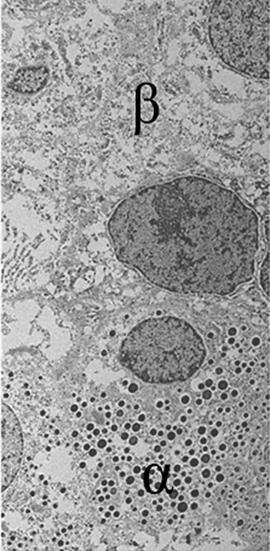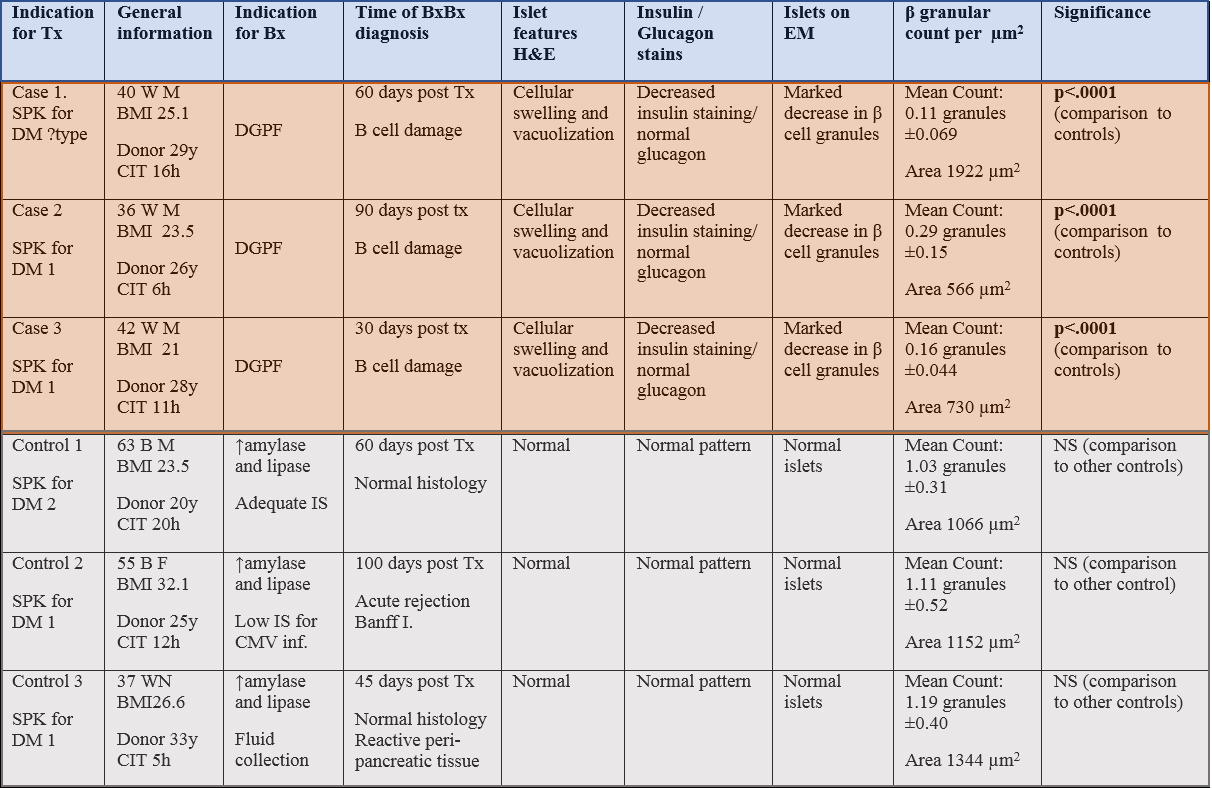Quantifiable Loss of Insulin Secretory Granules in Delayed Endocrine Pancreas Graft Function in Comparison to Controls
1Pathology, University of Maryland, Baltimore, MD, 2Surgery, University of Maryland, Baltimore, MD, 3Medicine, University of Maryland, Baltimore, MD
Meeting: 2020 American Transplant Congress
Abstract number: 514
Keywords: Graft failure, Insulin, Pancreas transplantation, Toxocity
Session Information
Session Name: Pancreas and Islet: All Topics II
Session Type: Oral Abstract Session
Date: Saturday, May 30, 2020
Session Time: 3:15pm-4:45pm
 Presentation Time: 3:39pm-3:51pm
Presentation Time: 3:39pm-3:51pm
Location: Virtual
*Purpose: Approximately 1/3 of pancreas transplant fail to gain glycemic control in the first days/weeks posttransplantation, requiring exogenous insulin administration. Delayed endocrine pancreas graft function (DPGF) usually resolves but may be associated with some decrease in graft survival.
*Methods: Endocrine islets were studied with light microscopy, immunostains for insulin, glucagon, CD3, CD20,CD68 and C4d and electron microscopy (EM) in 3 patients with protracted DPGF. Findings were compared with 3 control biopsies from patiensts with optimal graft function. On EM, insulin secretory granules per µm2 of β cell surface was quantitated in all biopsies (ImageJ software). The patients were induced with Alentuzumab (n=5) and Thymoglobulin (n=1) and received triple standard immunosuppression (IS).
*Results: In contrast to controls, marked injury of β cells was noted in DPGF with preservation of α cell morphology. Electron micrograph shows β cell with cytoplasmic vacuolization and sparse Insulin secretory granules, in contrast to normal density of glucagon secretory granules in the α cell.
Severe, statistically significant loss of insulin secretory granules was uniformly observed in DPGF. See table below.
After modification-adjustment of the IS regimen, 2 patients recovered graft function (totally and partially, respectively) and the other patient was re-listed due to primary non-function.
*Conclusions: Quantifiable loss of insulin secretory granules was observed in 3 patients with DPGF. In the absence of rejection or inflammatory changes suggesting allo- or autoimmune damage, these findings point to possible metabolic/toxic mechanisms for DPGF. Better understanding of this poorly characterized entity is necessary.
To cite this abstract in AMA style:
Drachenberg CB, Papadimitriou JC, Scalea JR, Haririan A, Ugarte R, Niederhaus S, Bromberg J. Quantifiable Loss of Insulin Secretory Granules in Delayed Endocrine Pancreas Graft Function in Comparison to Controls [abstract]. Am J Transplant. 2020; 20 (suppl 3). https://atcmeetingabstracts.com/abstract/quantifiable-loss-of-insulin-secretory-granules-in-delayed-endocrine-pancreas-graft-function-in-comparison-to-controls/. Accessed December 20, 2025.« Back to 2020 American Transplant Congress


